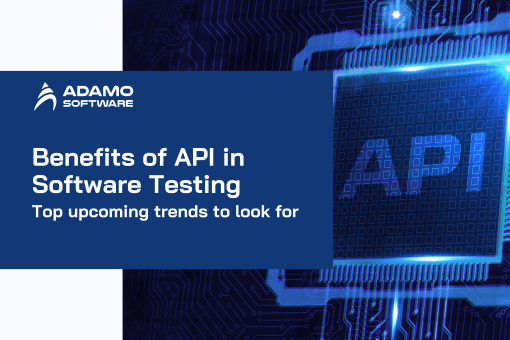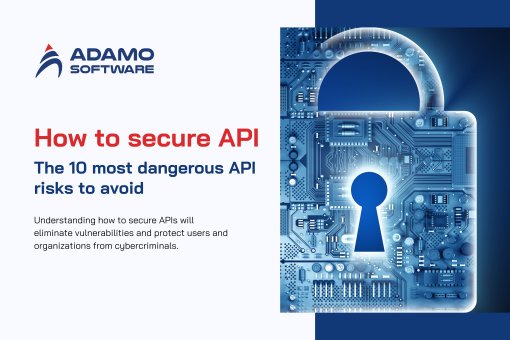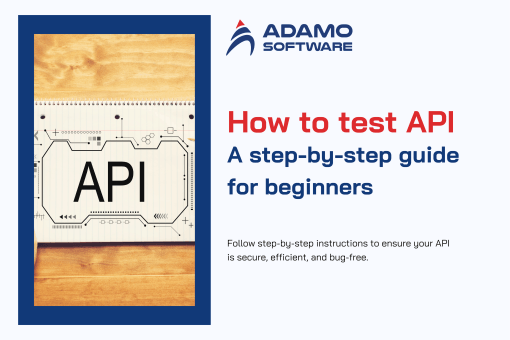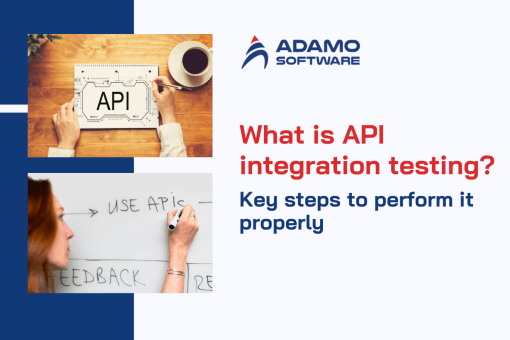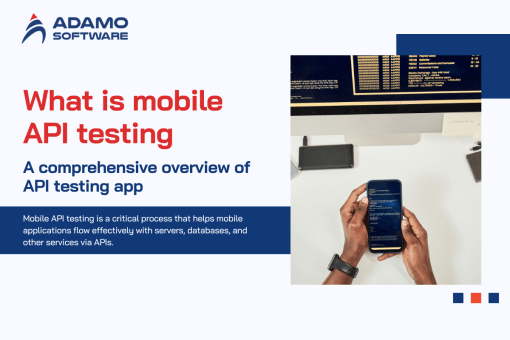How to Build AI Chatbot from Scratch in 2026
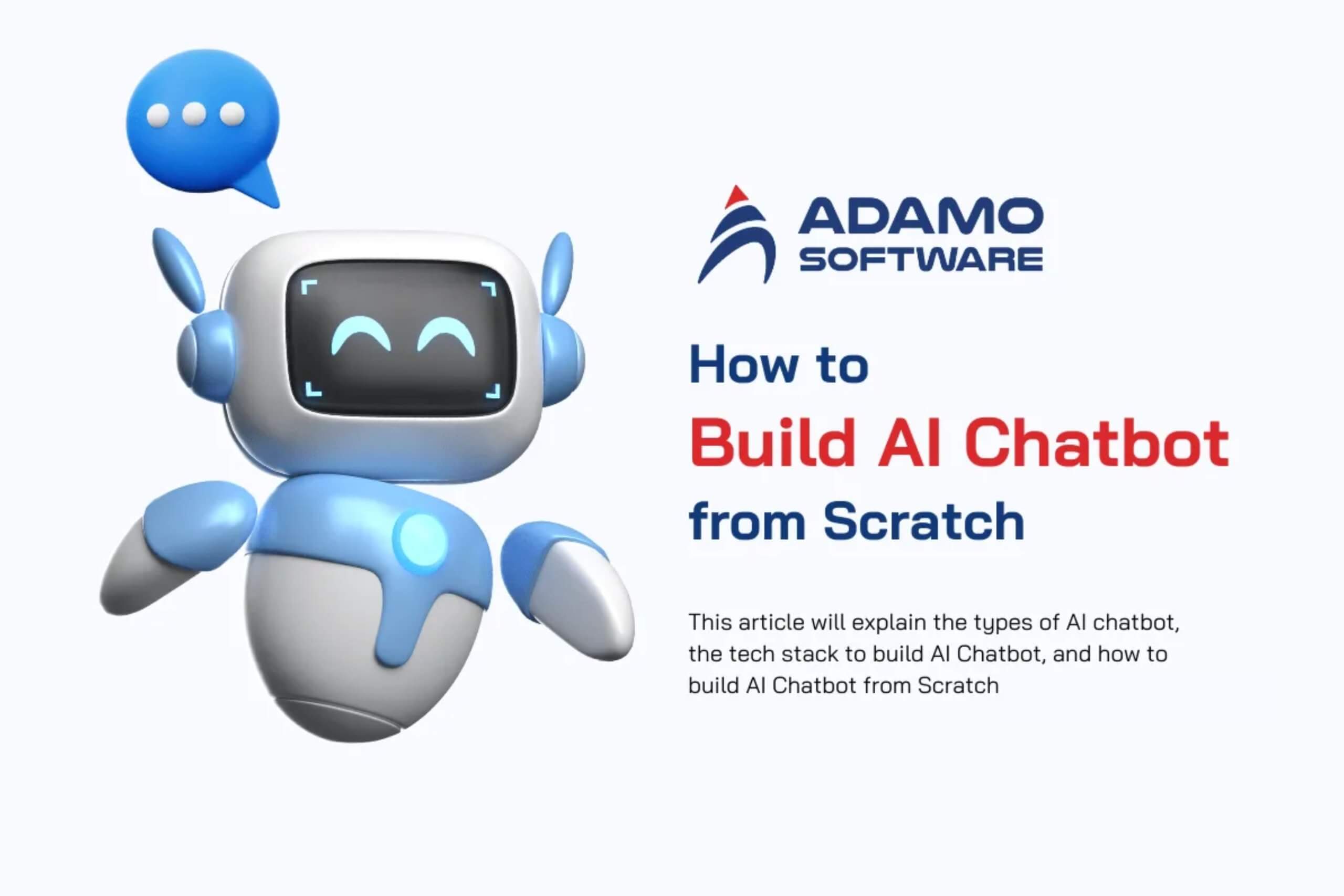
Today, with the increasingly popular development of technology and artificial intelligence. AI Chatbot has also become a global trend. According to recent studies, the AI Chatbot market is predicted to increase through 2030, making the industry one of the most profitable in the economy.
AI Chatbot is widely used in many fields, including healthcare, banking, hospitality, banking, and e-commerce. In this blog, we will show you how to build AI Chatbot from scratch in 2026.
I. AI Chatbot Market Statistics
Nowadays, AI Chatbot is becoming more popular, and many businesses are applying this technology to their marketing and customer care processes. The global chatbot market is forecast to reach 994 million USD by 2026.
According to business leaders (Outgrow), AI Chatbot could become the main customer support channel for a quarter of all companies (Gartner) by 2027. Sales increased by about 67% thanks to chatbots.
The popularity of artificial intelligence in many industries, such as banking, healthcare, and e-commerce, makes AI chatbots even more used. It has become an effective tool in communication between businesses and customers and always handles customer requests 24/7.
According to Grand View research, the global chatbot market is expected to expand at a compound annual growth rate of 23.3% from 2023 to 2030.
In business activities, Chatbots are widely used in companies in the B2B sector. While 58% of B2B companies use chatbots and 42% of B2C companies (Relay). The reason is due to the success of chatbots in generating many leads.
Using AI Chatbot, customers can get help with the purchasing process, schedule meetings, or sign up for automatic email newsletters. This also helps businesses save a lot of time.
In addition, the AI Chatbot also automates common tasks such as answering frequently asked questions and collecting customer feedback and reviews. With this approach, your business can reduce the work and hours of support, marketing, and sales agents. By 2024, chatbots are expected to save businesses about 2.5 billion working hours (Juniper Research). Therefore, AI Chatbot can increase conversion rates by 15%. (Zowie). Especially, by 2024, consumers will spend more than 142 billion USD through chatbots.
– The following are customer reviews for AI Chatbot:
- 59% of customers want to receive a response from AI Chatbot within 5 seconds (Drift).
- 69% of customers are satisfied with their conversations with chatbots (Tidio).
- 64% of people rate that the best feature of chatbots is 24/7 availability (Outgrow).
- However, there are still some other opinions, 21% of people have a neutral attitude, and only 10% are not satisfied with the conversation using AI Chatbot.
– However, general statistics also show that AI Chatbot still has some challenges as follows:
- 56% of businesses say conversational AI can disrupt work. (Accenture).
- 60% of consumers prefer chatting with employees over AI chatbots (Userlike). Because they fear AI Chatbot cannot understand them and cannot solve their problems in the best way. However, to improve this situation, many AI Chatbot builders are trying to improve their ability to read human versions into the purchase.
II. Understanding the Basics of AI Chatbot
To build AI Chatbot for your own business, it is important to understand the basic concepts of AI Chatbot and the foundations behind this AI chatbot technology, such as machine learning, and Natural Language Processing (NLP).
1. What is Natural Language Processing (NLP)?
In a simple word, natural language processing is the combination of linguistics and computer science. It enables machines to understand, interpret, and produce human language naturally that is both meaningful and valuable.

The following are the roles of natural language processing in AI Chatbot:
– Understanding: The first role at its core, the AI Chatbot must understand user queries. That’s why NLP allows AI Chatbots the ability to analyze and interpret the complexities of human languages, such as slang, dialects, idioms or even spelling errors.
– Contextual responses: Thanks to NLP, AI Chatbot not only gives pre-programmed answers, but it also captures the context of the conversation. Make sure users get the feedback they want.
– Continuous Learning: As users interact with the AI Chatbot, it learns phrases, and slang, fine-tuned to their linguistic abilities to ensure they stay up to date with emerging new language trends in the community.
2. Key Differences of Artificial Intelligence vs. Basic Chatbots
– Scripted responses: Basic Chatbots often respond according to scripts or predefined scripts. They match user input and respond according to the closest available scenario. While they can be effective for specific tasks, for complex queries they lack the flexibility to handle them.
– Learning and adaptability: Different from basic Chatbots, AI Chatbots will take advantage of their machine learning capabilities to learn from user interactions and language, adapting over time to provide more responses. more nuanced feedback. In addition, they can also understand human intentions, thoughts, and emotions, and they can even adapt to the user’s conversation style.
– Handling ambiguity: While basic Chatbots often struggle with vague and unclear queries, AI Chatbots can ask follow-up questions to ensure they can provide the right information, or service to users most appropriately.
3. How machine learning powers AI Chatbot responses
Machine learning is a subset of artificial intelligence. This is the important and magical factor behind AI Chatbot’s almost human-like intelligent responses.
– Training data: To build your own chatbot, you must provide it with a lot of training data to help it learn many different user expressions and queries so that it can answer them promptly and effectively.
– Pattern Recognition: As it interacts with users over time, AI Chatbot will begin to recognize and identify patterns in their behavior and language. This pattern recognition allows the AI Chatbot to predict and respond to answers that are most relevant and complete to the user’s intent.
– Feedback loop: The advantage of machine learning lies in its iterative nature. Because with each interaction, AI Chatbot will intelligently adjust its algorithms, to ensure accurate and better responses in subsequent conversations.
III. Different Types of AI Chatbot
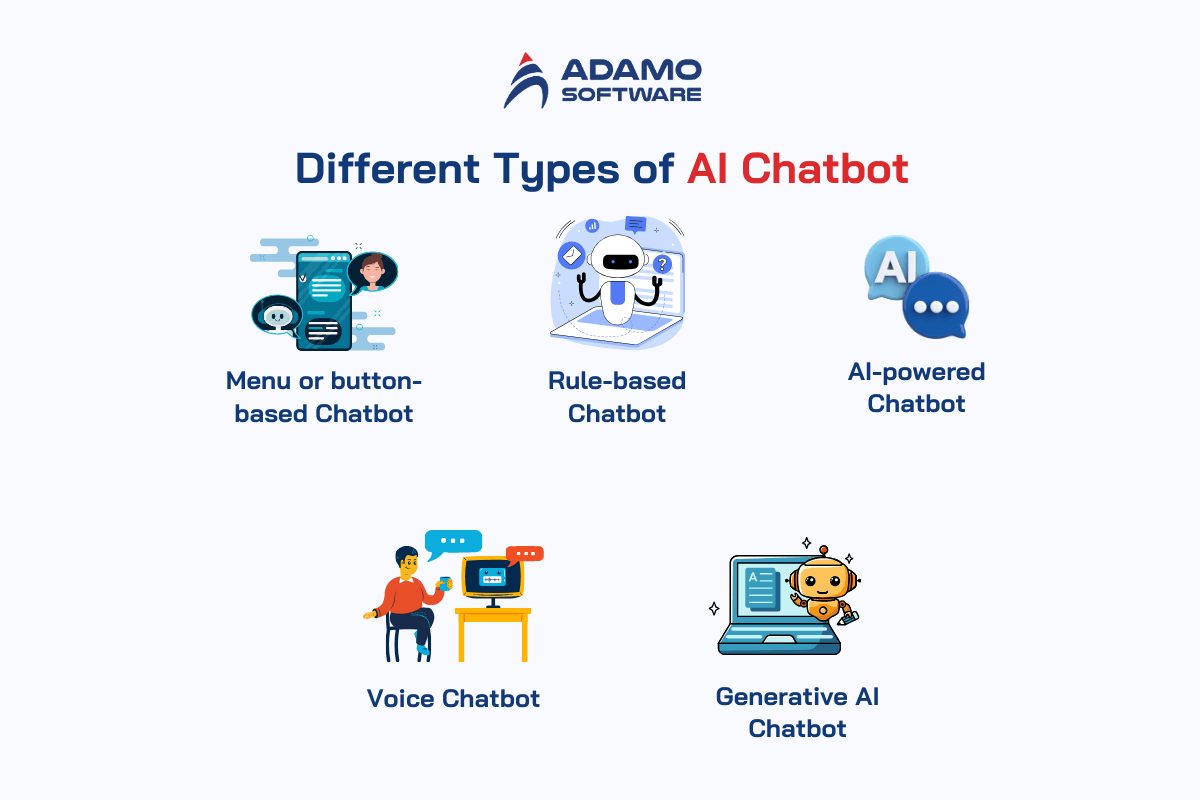
1. Menu or button-based Chatbot
Menu- or button-based Chatbots are the most basic type of Chatbots. Users interact with this type by clicking a scripted menu button option. Depending on the content the user clicks on, it may prompt a different set of options for the user to choose from until the option that best suits their needs is reached.
Although menu- or button-based Chatbots provide simple and convenient functions in answering repetitive, easy-to-understand user questions, when faced with complex requests Moreover, these Chatbots can face many difficulties and problems because they are limited to answer options that are not available in the available script. Therefore, when interacting with users, this Chatbot may take longer to understand customer needs. Additionally, if the user’s needs are not included in the menu options, the user will not be able to use the chatbot because it does not offer a free version.
2. Rule-based Chatbot
This Chatbot works using conditional if/then logic to develop automation of conversations. For rule-based bots that work like “Interactive FAQs,” the programmatic conversation creator creates predetermined combinations of question and answer options so that the AI Chatbot can understand user input so you can respond accurately.
This chatbot is relatively effective because it works on basic keyword detection or when asked predetermined questions in a situation.
However, just like menu-based Chatbots, rule-based Chatbots can struggle when faced with complex queries. For example, it is difficult for a conversation designer to predict questions whose output depends on the pre-written content programmed by the chatbot developer.
Due to the inability to capture user requirements, conversation designers often cannot predict and pre-program chatbots for all those types of questions and queries, so rule-based chatbots will encounter many limitations and difficulties. So, when the chatbot fails to understand the user’s request, it will ask the user to repeat information that was previously shared. This can lead to a poor user experience and often causes users to turn to live support staff. In some cases, the transfer to support agent feature is not enabled, making users feel uncomfortable.
3. AI-powered chatbots
With the help of AI, AI Chatbot can understand users’ questions, no matter how they are phrased. With natural language understanding (NLU), it can recognize all the contextual information the user has shared, making the conversation flow more smoothly and naturally. When it is uncertain about what the user is asking, it can ask additional questions to clarify the user’s request.
Additionally, the machine learning algorithms that underpin AI Chatbot also give it the ability to self-learn to develop an increasingly deeper knowledge based on user interactions and knowledge.
For example, with deep learning, the longer an AI Chatbot operates, the better it understands what the user wants and provides more appropriate and accurate responses than a Chatbot with knowledge based on a known algorithm. As for the conversational AI Chatbot type, it can remember all the conversations with users and incorporate these situations into their interactions. This AI Chatbot is integrated with business systems and can pull information about customers’ order history to create a more streamlined and faster ordering process.
In case the user is not satisfied with the chatbot and wants to talk to a support agent, the transfer will be smooth. In particular, after transferring the conversation, live support staff can retrieve the user’s conversation history with the chatbot to fully understand the customer’s request.
4. Voice chatbots

Voice chatbot is a useful tool that allows users to interact with the bot more quickly and easily by talking to it by voice instead of typing. However, when using simple voice chatbots, some users may feel frustrated with “Interactive Voice Response” (IVR) technology. The reason is that sometimes the system cannot retrieve the information the user is looking for from the pre-programmed menu options which makes the user uncomfortable while waiting.
AI-powered voice chatbots can provide more advanced features like AI Chatbots. However, they are deployed in conversations and use technology to convert text to speech and speech to text. With the help of NLP, voice AI Chatbots can clearly understand questions so they can analyze user needs and respond in a more natural tone. These factors help increase customer and employee engagement, help improve call resolution rates, and effectively reduce wait times.
5. Generative AI chatbots
The generative AI chatbot has many superior features because it has fluent language understanding, the ability to adapt to each user’s unique conversation style, and the ability to use empathy to answer user’s questions.
If conversational AI Chatbots can handle user questions or requests and create genuine human-like responses, then generative AI Chatbots have the special feature of creating new content to do output. These new contents can be high-quality text, images, and audio based on the LLM in which they received training. The generative AI Chatbot interface has functions such as recognition, summarization, translation, prediction, and content generation to respond to user queries without human interaction.
IV. Tech Stack to Create AI Chatbot
Choosing a good technology stack can help you build AI Chatbot on your own faster because it has been tested and selected effectively. However, there is no “best” technology stack for every project. Therefore, you must choose technologies based on your company’s goals and budget.
AI Chatbot is a useful tool for every industry, especially in the field of sales and marketing. You can build AI Chatbot using a combination of the following technology stack:
– Scripts are written according to the functional and non-functional requirements of AI Chatbot, such as JavaScript, Ruby, PHP, Python, SQL, etc.
– When the browser requests specific data, JSON is used. It allows enhanced communication between the server and the browser.
– API calls and HTTPS connections are handled by the server.
– Cloud service provides chat storage for a better understanding of intent, appropriate responses, and scalability of AI Chatbot.
– Machine learning algorithms and natural language processing techniques are used in the NLP framework so that AI Chatbot can more accurately understand the syntax and semantics of sentences.
V. Step-by-step Guide to Build AI Chatbot
In this section, we will dive into how to build AI Chatbot. There are 6 steps to create your own AI Chatbot:

Step 1: Determine your aims
An AI Chatbot AI can serve many different purposes. Therefore, the first step to build AI Chatbot you need to take is to determine your purpose. You need to ask questions like: Are you building a AI Chatbot to enhance your customer service team? Do you want to create a potential customer file? Do you want to understand customer needs and recommend suitable products? Do you want to use a conversational AI Chatbot to increase sales for your e-commerce stores? Asking such questions will help you clearly define your goals and direct your AI Chatbot building strategy.
Step 2: Choose the right tech stack
The next important step to build AI Chatbot is choosing the right tech stack. If you want to customize a commercial chatbot from AWS, IBM, or Microsoft, this is relatively simple. These AI Chatbots are usually quite easy to set up, and you can deploy them across a variety of channels, including your website, social media, or standalone apps.
Step 3: Design the chatbot conversation
The next step to build AI Chatbot is to design the conversation flow for the AI Chatbot. If you intend to build a simple AI Chatbot, configure the decision tree with actions and notifications based on user interactions. However, you will need to train the AI Chatbot so that it can understand user intentions and take on a more proactive role.
However, to build AI Chatbot that can answer questions like humans, you need to choose a base model and develop prompts to generate the desired responses. The model then learns from the expected results and records what it has learned for the next use.
Step 4: Build the knowledge base for the chatbot
If you are developing a simple rule-based Chatbot, then you can skip this step. If you are building AI Chatbot, integrate your Chatbot with a deep knowledge base to support continuous refinement to better suit the context for which it is designed. Elements like the Knowledge Base store FAQs, chat history, and other information that help Chatbots better understand user queries. Therefore, it makes AI Chatbot a more genuine support tool.
Step 5: Integrate AI Chatbot with the application
As a next step, you should integrate and test the functionality of the AI Chatbot with the product designed for it to create a complete AI Chatbot. It means you must design a good UI/UX flow to integrate a Chatbot into a new or existing application. Additionally, you need to streamline data flow, security, and monitoring across both backends of the software.
Step 6: Refine the AI Chatbot
The last but not the least important step to build AI Chatbot is to fine-tune the AI Chatbot. You have to test the Chatbot with a selected group of users, collect feedback, and fine-tune the Chatbot or the underlying deep-learning language model. Ensure the AI Chatbot responds as expected and can transition the conversation to a support agent smoothly. Once done, bring the AI Chatbot to the public.
VI. Challenges When Build Your Own Chatbot
Building your own AI Chatbot is not a simple thing, and there are many challenges, but each challenge is an opportunity for you to learn and develop AI Chatbot more effectively. In this section, we’ll dive into some of the challenges and offer valuable solutions to help you build AI Chatbot.
Challenge 1: Understand user purposes
– Problem: One of the biggest challenges in building your own AI Chatbot is accurately understanding user intent. Because language can sometimes be vague, slangy, and context-dependent, deciphering what the user actually means to understand their request can be complicated.
– Solution: Use NLP techniques like Named Entity Recognition (NER) and Intent Classification to interpret user input. You can leverage machine learning models trained on large data sets to recognize and respond to various simple to complex user queries.

Challenge 2: Handling conversational context
– Problem: Maintaining the context of the conversation is important to provide coherent and connected answers. Without this, the AI Chatbot may not understand references to previous messages, leading to a fragmented and disconnected conversation.
– Solution: To solve this challenge, you can implement context management in Chatbots by managing conversations and tracking sessions.
Challenge 3: Handling unfamiliar queries
– Problem: For rule-based Chatbots, the possibility of encountering strange or out-of-scope queries is very difficult and can even disrupt the user experience.
– Solution: To solve it, make your Chatbot skillful in handling strange queries. Or you can direct users to live agent support or suggest alternative queries. It is best to regularly update and train your Chatbot based on new queries and new trends.
Challenge 4: Lack of personalization
– Problem: Creating generic responses can make Chatbot’s interaction with users become very mechanical and unnatural, leading to reduced user engagement and satisfaction.
– Solution: You should implement personalization in your Chatbot. This ranges from using usernames to tailoring responses based on the user’s personality, interests, and past interactions.
Challenge 5: Scaling and Deployment
– Problem: The next difficult challenge is scaling and deployment. As your Chatbot becomes more complex and user traffic increases, it may encounter issues related to performance, scalability, and deployment.
– Solution: It’s better to plan for scalability from the beginning. Cloud services and powerful deployments can be used to monitor performance more frequently and optimize promptly when necessary.
VII. How Adamo Can Help You with Your AI Chatbot Development
AI Chatbot development is a strenuous and not easy journey. If you want to create your own AI Chatbot, let’s Adamo help you turn your idea into reality.

As a leading company in the technology sector in Vietnam, Adamo Software provides advanced AI Development Services in various industries including tourism, hospitality, digital healthcare solutions, fintech, media and entertainment software solutions, e-commerce and education and other fields.
Our experienced development experts at Adamo always use updated technologies and help your business achieve its business goals. We will help you develop effective AI Chatbots, help achieve data-driven modernization, and help you get ahead of your competitors.







